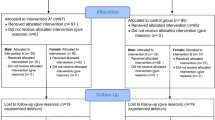Abstract.
We performed a prospective randomised trial to evaluate the efficacy of pre-operative skin traction for proximal femoral fractures in 311 patients. We found a significant difference in pain score on the evening of admission and the first morning after admission between the groups with traction compared the group without. However, there was no corresponding increase in analgesic requirement during this period. The peak pain score pattern also was different in our population. No other objective benefit can be shown from using skin traction, and its routine use should be abandoned.
Résumé.
Nous avons mené une étude prospective et randomisée pour évaluer l'efficacité de la traction cutanée préopératoire pour les fractures fémorales proximales chez 311 malades. Nous avons trouvé une différence notable dans le score de la douleur le soir de l'admission et le premier matin après l'admission entre le groupe avec traction comparé au groupe sans traction. Cependant, il n'y avait pas d'augmentation correspondante de la nécessité d'analgésiques pendant cette période ou la douleur était cotée au plus haut. Aucun autre avantage objectif d'utiliser la traction cutanée n'a été montré et son usage habituel devrait être abandonné.
Similar content being viewed by others
Author information
Authors and Affiliations
Additional information
Electronic Publication
Rights and permissions
About this article
Cite this article
Yip, D., Chan, C., Chiu, P.K. et al. Why are we still using pre-operative skin traction for hip fractures?. International Orthopaedics (SICOT) 26, 361–364 (2002). https://doi.org/10.1007/s00264-002-0387-8
Accepted:
Issue Date:
DOI: https://doi.org/10.1007/s00264-002-0387-8




